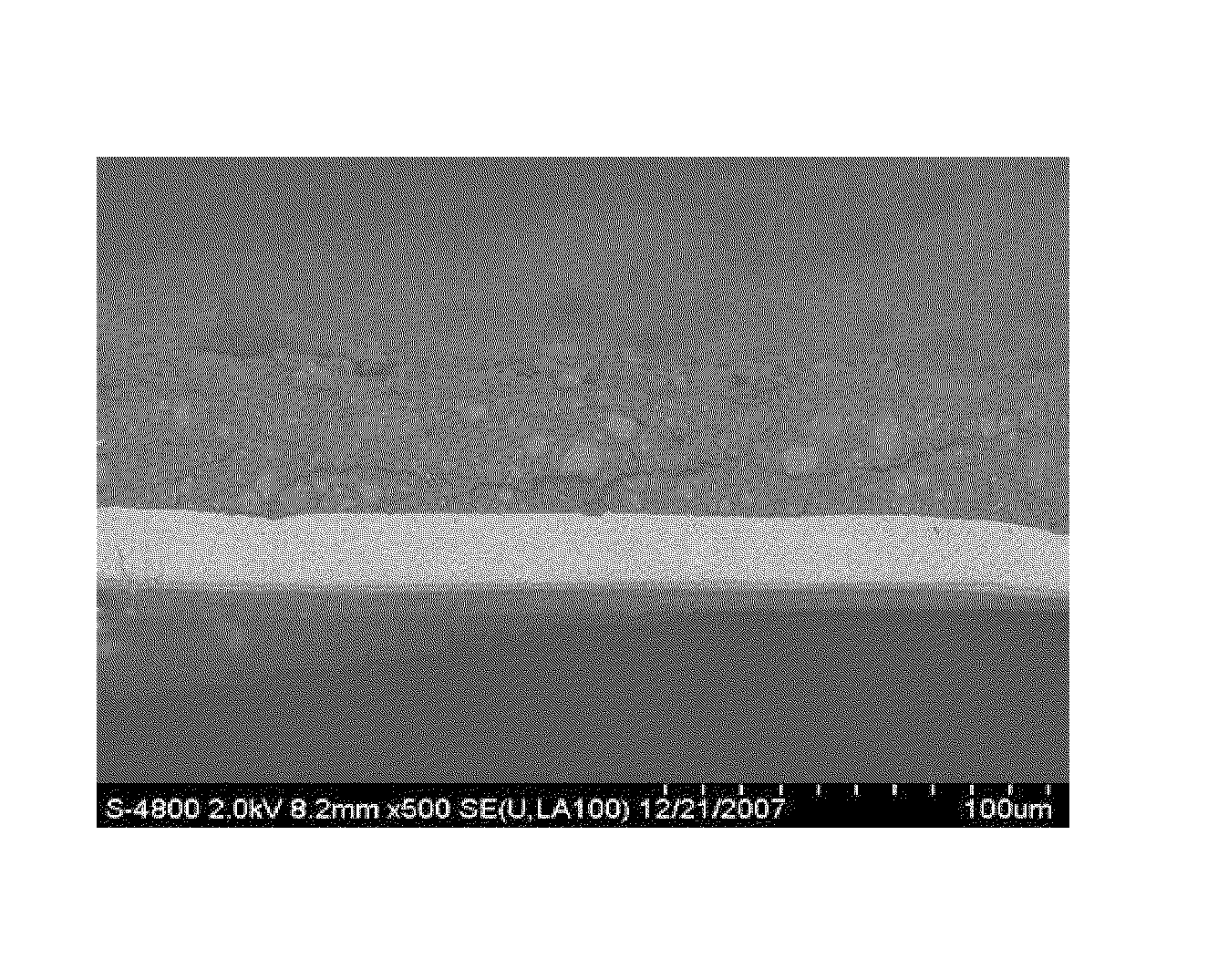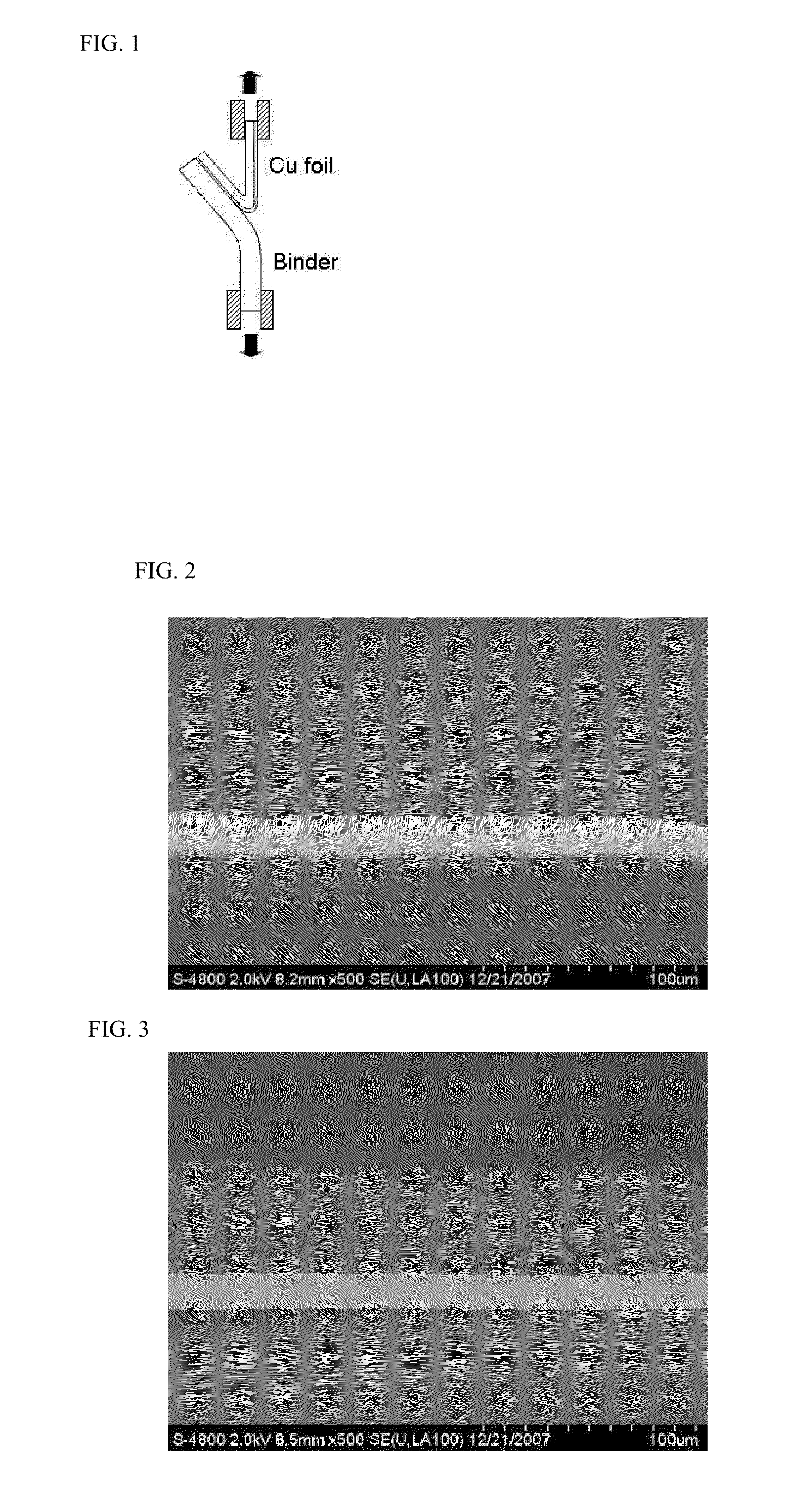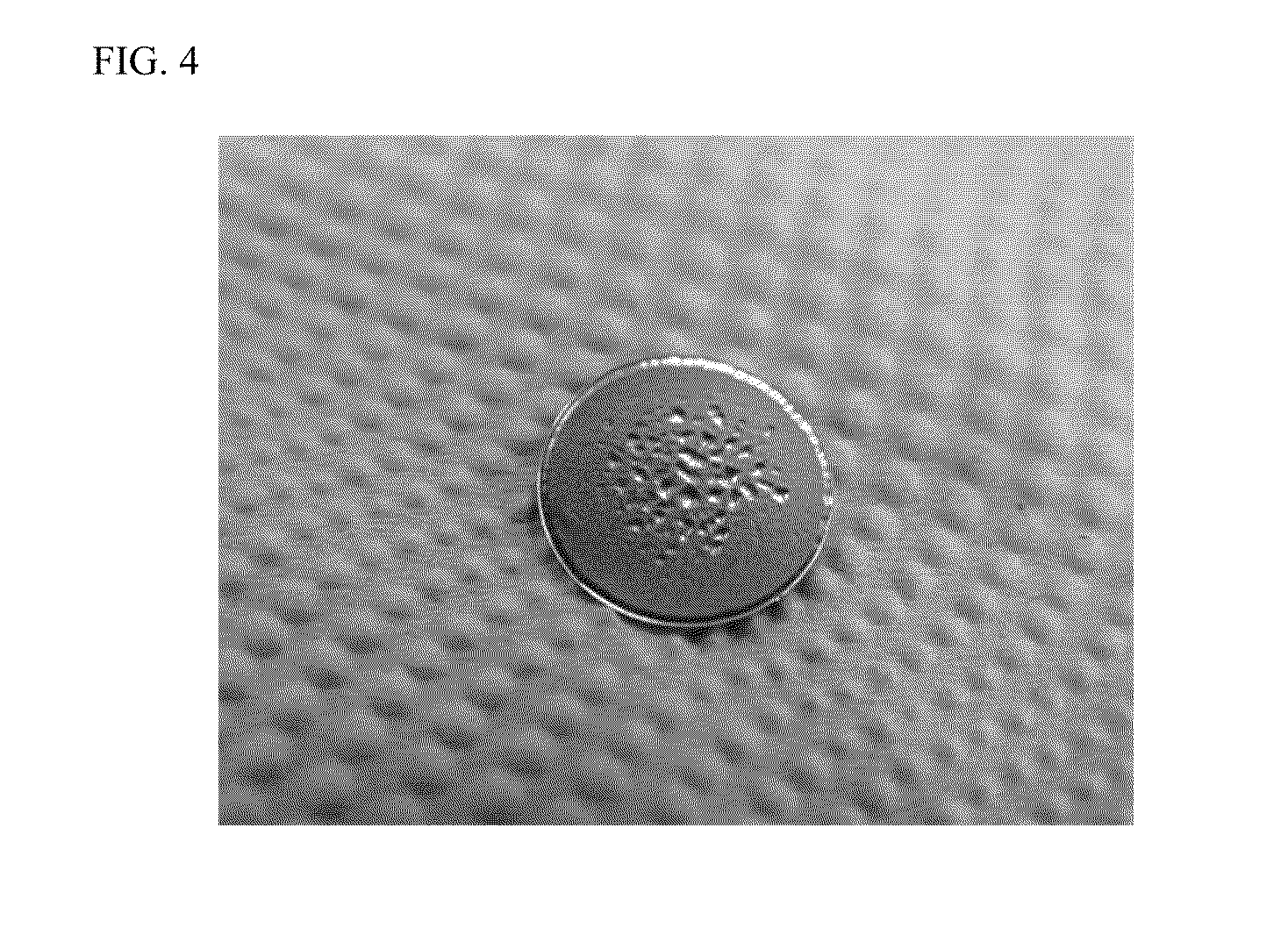Electrode binder for secondary battery and secondary battery using the same
a secondary battery and electrode binder technology, applied in the direction of conductive materials, non-conductive materials with dispersed conductive materials, electrical apparatuses, etc., can solve the problems of reducing capacity, affecting the cycle life, and causing significant volume changes, so as to inhibit the separation of an electrode active material and improve the cohesion force
- Summary
- Abstract
- Description
- Claims
- Application Information
AI Technical Summary
Benefits of technology
Problems solved by technology
Method used
Image
Examples
example 1
Test on Adhesion Force and Cohesion Force
[0052]By using polyacrylonitrile (PAN) as a binder, the following test on the adhesion force and the cohesion force was carried out.
[0053]1. Test on the Adhesion Force Between a Binder and a Current Collector
[0054]A polyacrylonitrile (PAN) binder having a weight average molecular weight of 1,150,000 was dissolved in N-methyl-2-pyrrolidone (NMP) to obtain an electrode binder solution, and the obtained electrode binder solution was applied on a copper foil film and dried at 120° C. for about 6 hours to provide a binder film. The copper foil which has been coated with the binder through the above described method was cut with an interval of 5 mm, and was subjected to a 180° peel test as shown in FIG. 1 so as to measure the adhesion force between the binder and the copper foil. The results are noted in Table 1.
[0055]2. Test on the Cohesion Force Between an Active Material and a Binder Within an Electrode
[0056]A polyacrylonitrile (PAN) binder havi...
example 2
Fabrication of Secondary Battery
[0059]Based on a non-aqueous electrolyte solvent (ethylene carbonate (EC):diethyl carbonate (DEC)=3:7 in a volume ratio), 1M LiPF6 was added to prepare a non-aqueous electrolyte.
[0060]Anode powder of a metal oxide-based SiO—C composite, as an anode active material, and polyacrylonitrile (PAN) used in Example 1, as a binder were mixed in a ratio of anode powder:binder=90 parts by weight:10 parts by weight, and the mixture was added to NMP to prepare an anode slurry. The anode slurry was coated on a copper foil current collector to provide an anode.
[0061]The anode fabricated by the above described method was cut into a circular shape with an area of 1.4875 cm2, and was used as a working electrode (anode), and a circular-shaped metal lithium foil was used as a counter electrode (cathode) so as to provide a coin-shaped half cell. Between the working electrode and the counter electrode, a porous polyolefin separator was intervened to manufacture a lithium ...
example 3
Fabrication of Secondary Battery
[0062]The lithium secondary battery was fabricated in the same manner as described in Example 2, except that polyacrylonitrile (PAN) having a weight average molecular weight of 150,000 was used.
PUM
| Property | Measurement | Unit |
|---|---|---|
| Density | aaaaa | aaaaa |
| Density | aaaaa | aaaaa |
| Surface energy | aaaaa | aaaaa |
Abstract
Description
Claims
Application Information
 Login to View More
Login to View More - R&D
- Intellectual Property
- Life Sciences
- Materials
- Tech Scout
- Unparalleled Data Quality
- Higher Quality Content
- 60% Fewer Hallucinations
Browse by: Latest US Patents, China's latest patents, Technical Efficacy Thesaurus, Application Domain, Technology Topic, Popular Technical Reports.
© 2025 PatSnap. All rights reserved.Legal|Privacy policy|Modern Slavery Act Transparency Statement|Sitemap|About US| Contact US: help@patsnap.com



